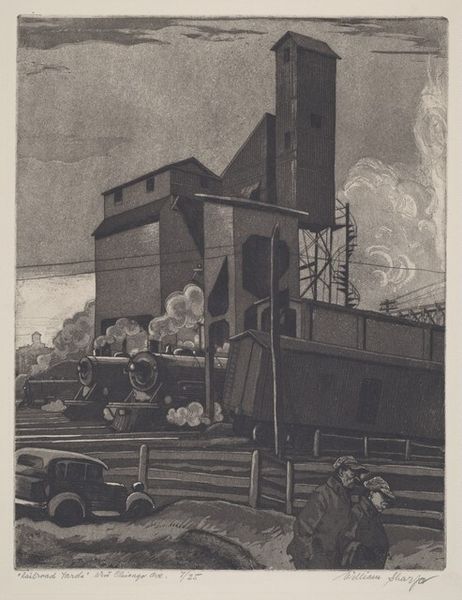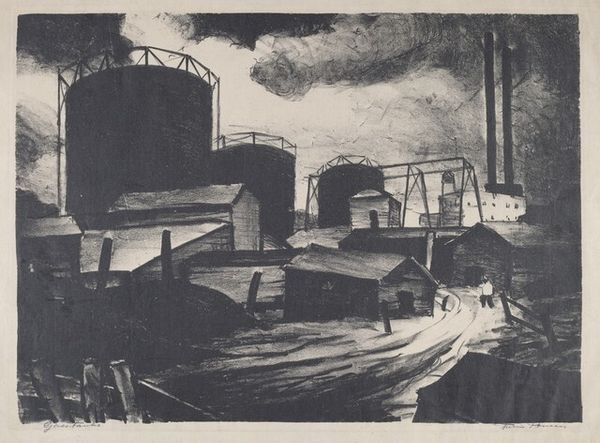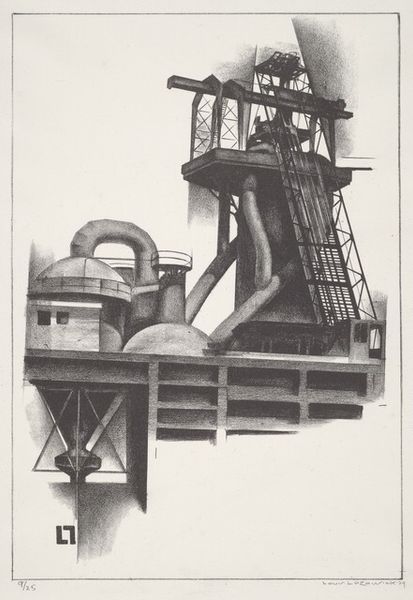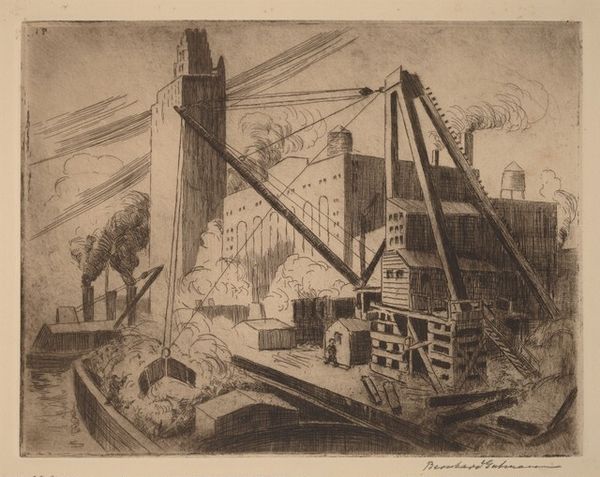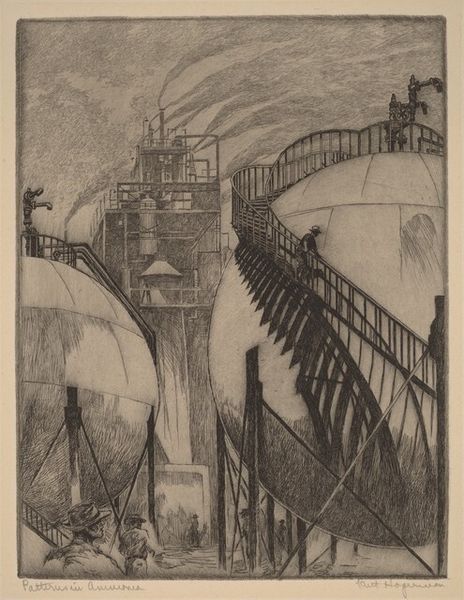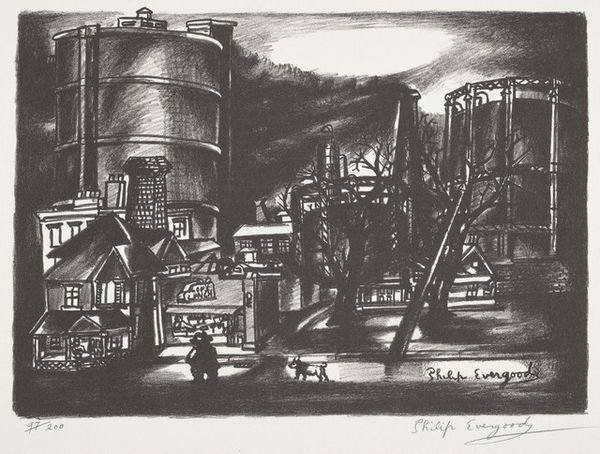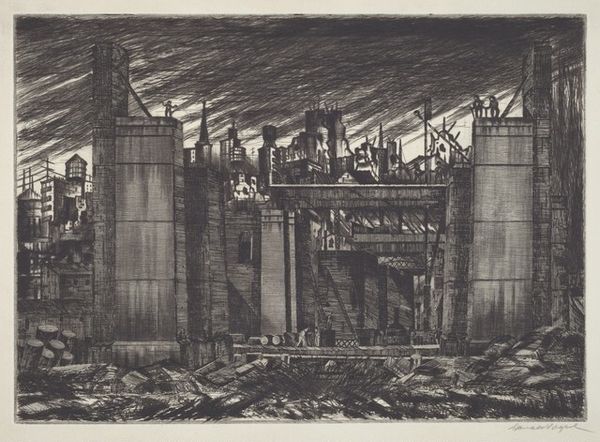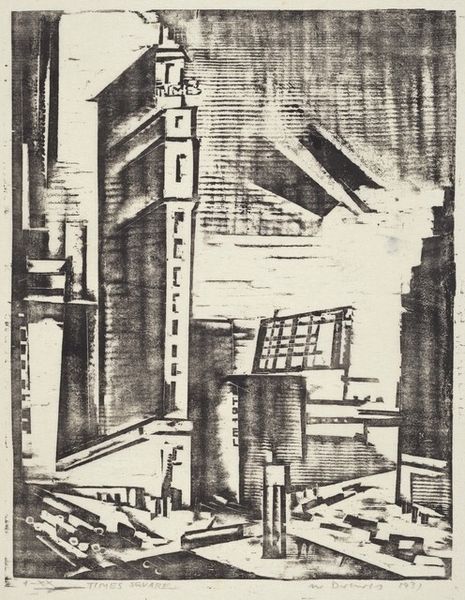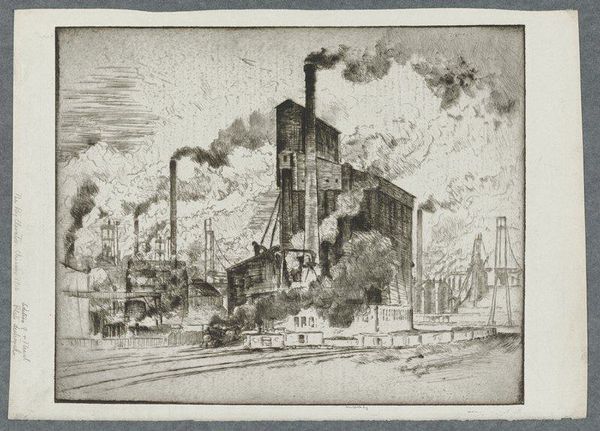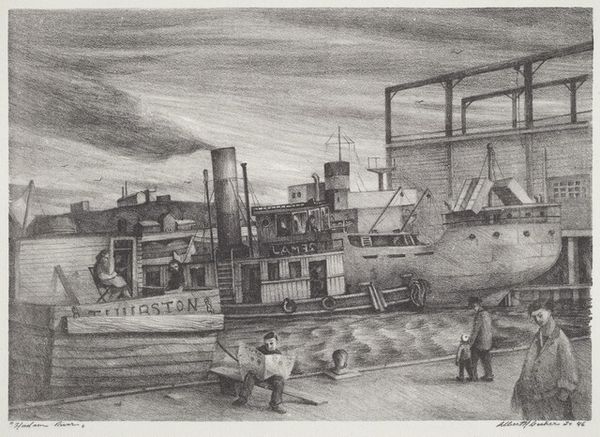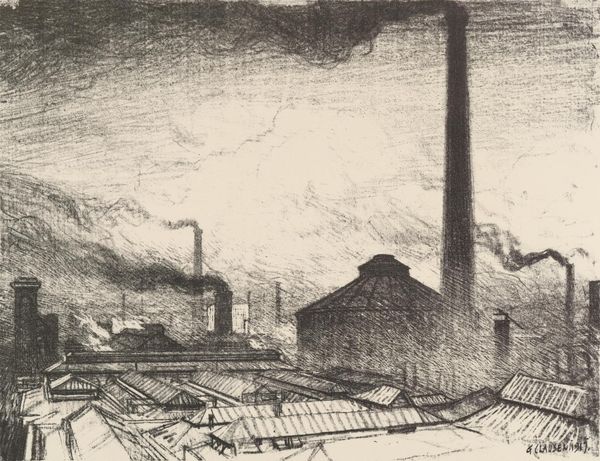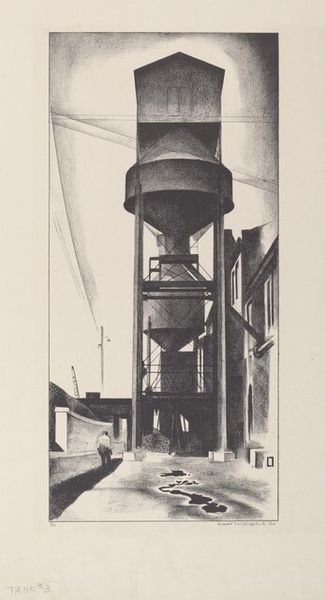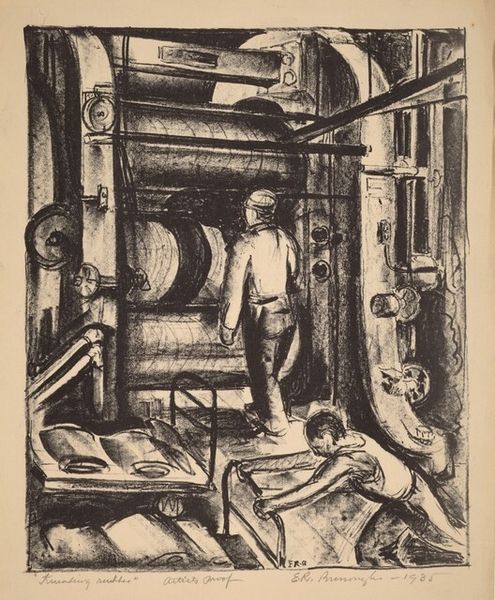
Fractionating Tower (Standard Oil Refinery, Bayonne, N.J.) 1930
0:00
0:00
print, etching
# print
#
etching
#
cityscape
#
realism
Dimensions: image: 435 x 337 mm sheet: 540 x 406 mm
Copyright: National Gallery of Art: CC0 1.0
Editor: This is Isac Friedlander's "Fractionating Tower (Standard Oil Refinery, Bayonne, N.J.)" from 1930, an etching printed on paper. The first thing that strikes me is how powerfully the artist has captured this industrial scene with so much texture, but rendered in stark black and white. How do you read the composition, its geometry, and tonal arrangement? Curator: The image impresses through its manipulation of contrasting textures. Consider the dense hatching articulating the bulk of the tower in counterpoint with the planar faceting of the metal framework which sprouts, skeletal and yet robust. The formal juxtaposition serves to emphasise industrial monumentality, no? Editor: Yes, and how the smoke almost feels as solid as the structures themselves. The textures create depth, pulling you into the refinery's heart, a potentially dark interior, given the values, which could signal decay in what is represented.. I wonder how Friedlander uses these lines to organize the space and perhaps the message within it. Curator: Observe the almost relentless orthogonals of the framework; the verticals and horizontals interlock with remarkable precision. Are you sensing how the geometry controls the depicted space? The eye follows each sharp vector; this order provides the structural syntax by which we decode the picture. Editor: It's fascinating how a subject as typically 'unromantic' as an oil refinery can be represented in a rather romantic, almost heroic manner, particularly due to the use of linear perspective, giving it strength. The composition clearly elevates its formal significance. Is this intentional, do you think? Curator: Undoubtedly so. The refinery transcends its prosaic functionality. Notice how the image is fundamentally constituted through formal relations; line to volume, plane to surface. And does not the final image speak, fundamentally, about the language of geometric forms itself? The depicted motif provides occasion, I submit, to investigate representational codes. Editor: That's really insightful; I see now that focusing on how shapes, textures and composition build form is key to experiencing this etching. Thank you! Curator: Precisely. We must acknowledge that the reality exists here as an aesthetic experience: Friedlander’s arrangement generates form itself.
Comments
No comments
Be the first to comment and join the conversation on the ultimate creative platform.
